Рейтинг книг Eric Shanes
Начиная изучать творчество писателя - уделите внимание произведениям, которые находятся на вершине этого рейтинга. Смело нажимайте на стрелочки - вверх и вниз, если считаете, что какое-то произведение должно находиться выше или ниже в списке. В результате общих усилий, в том числе, на основании ваших оценок мы и получим самый адекватный рейтинг книг Eric Shanes.
-
1.
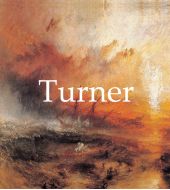 At fifteen, Turner was already exhibiting View of Lambeth. He soon acquired the reputation of an immensely clever watercolourist. A disciple of Girtin and Cozens, he showed in his choice and presentation of theme a picturesque imagination which seemed to mark him out for a brilliant career as an illustrator. He travelled, first in his native land and then on several occasions in France, the Rhine Valley, Switzerland and Italy. He soon began to look beyond illustration. However, even in works in which we are tempted to see only picturesque imagination, there appears his dominant and guiding ideal of lyric landscape. His choice of a single master from the past is an eloquent witness for he studied profoundly such canvases of Claude as he could find in England, copying and imitating them with a marvellous degree of perfection. His cult for the great painter never failed. He desired his Sun Rising through Vapour and Dido Building Carthage to be placed in the National Gallery side by side with two of Claude’s masterpieces. And, there, we may still see them and judge how legitimate was this proud and splendid homage. It was only in 1819 that Turner went to Italy, to go again in 1829 and 1840. Certainly Turner experienced emotions and found subjects for reverie which he later translated in terms of his own genius into symphonies of light and colour. Ardour is tempered with melancholy, as shadow strives with light. Melancholy, even as it appears in the enigmatic and profound creation of Albrecht Dürer, finds no home in Turner’s protean fairyland – what place could it have in a cosmic dream? Humanity does not appear there, except perhaps as stage characters at whom we hardly glance. Turner’s pictures fascinate us and yet we think of nothing precise, nothing human, only unforgettable colours and phantoms that lay hold on our imaginations. Humanity really only inspires him when linked with the idea of death – a strange death, more a lyrical dissolution – like the finale of an opera. ... Далее
At fifteen, Turner was already exhibiting View of Lambeth. He soon acquired the reputation of an immensely clever watercolourist. A disciple of Girtin and Cozens, he showed in his choice and presentation of theme a picturesque imagination which seemed to mark him out for a brilliant career as an illustrator. He travelled, first in his native land and then on several occasions in France, the Rhine Valley, Switzerland and Italy. He soon began to look beyond illustration. However, even in works in which we are tempted to see only picturesque imagination, there appears his dominant and guiding ideal of lyric landscape. His choice of a single master from the past is an eloquent witness for he studied profoundly such canvases of Claude as he could find in England, copying and imitating them with a marvellous degree of perfection. His cult for the great painter never failed. He desired his Sun Rising through Vapour and Dido Building Carthage to be placed in the National Gallery side by side with two of Claude’s masterpieces. And, there, we may still see them and judge how legitimate was this proud and splendid homage. It was only in 1819 that Turner went to Italy, to go again in 1829 and 1840. Certainly Turner experienced emotions and found subjects for reverie which he later translated in terms of his own genius into symphonies of light and colour. Ardour is tempered with melancholy, as shadow strives with light. Melancholy, even as it appears in the enigmatic and profound creation of Albrecht Dürer, finds no home in Turner’s protean fairyland – what place could it have in a cosmic dream? Humanity does not appear there, except perhaps as stage characters at whom we hardly glance. Turner’s pictures fascinate us and yet we think of nothing precise, nothing human, only unforgettable colours and phantoms that lay hold on our imaginations. Humanity really only inspires him when linked with the idea of death – a strange death, more a lyrical dissolution – like the finale of an opera. ... Далее -
2.
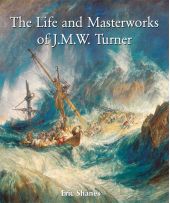 At fifteen, Turner was already exhibiting View of Lambeth. He soon acquired the reputation of an immensely clever watercolourist. A disciple of Girtin and Cozens, he showed in his choice and presentation of theme a picturesque imagination which seemed to mark him out for a brilliant career as an illustrator. He travelled, first in his native land and then on several occasions in France, the Rhine Valley, Switzerland and Italy. He soon began to look beyond illustration. However, even in works in which we are tempted to see only picturesque imagination, there appears his dominant and guiding ideal of lyric landscape. His choice of a single master from the past is an eloquent witness for he studied profoundly such canvases of Claude as he could find in England, copying and imitating them with a marvellous degree of perfection. His cult for the great painter never failed. He desired his Sun Rising through Vapour and Dido Building Carthage to be placed in the National Gallery side by side with two of Claude’s masterpieces. And, there, we may still see them and judge how legitimate was this proud and splendid homage. It was only in 1819 that Turner went to Italy, to go again in 1829 and 1840. Certainly Turner experienced emotions and found subjects for reverie which he later translated in terms of his own genius into symphonies of light and colour. Ardour is tempered with melancholy, as shadow strives with light. Melancholy, even as it appears in the enigmatic and profound creation of Albrecht Dürer, finds no home in Turner’s protean fairyland – what place could it have in a cosmic dream? Humanity does not appear there, except perhaps as stage characters at whom we hardly glance. Turner’s pictures fascinate us and yet we think of nothing precise, nothing human, only unforgettable colours and phantoms that lay hold on our imaginations. Humanity really only inspires him when linked with the idea of death – a strange death, more a lyrical dissolution – like the finale of an opera. ... Далее
At fifteen, Turner was already exhibiting View of Lambeth. He soon acquired the reputation of an immensely clever watercolourist. A disciple of Girtin and Cozens, he showed in his choice and presentation of theme a picturesque imagination which seemed to mark him out for a brilliant career as an illustrator. He travelled, first in his native land and then on several occasions in France, the Rhine Valley, Switzerland and Italy. He soon began to look beyond illustration. However, even in works in which we are tempted to see only picturesque imagination, there appears his dominant and guiding ideal of lyric landscape. His choice of a single master from the past is an eloquent witness for he studied profoundly such canvases of Claude as he could find in England, copying and imitating them with a marvellous degree of perfection. His cult for the great painter never failed. He desired his Sun Rising through Vapour and Dido Building Carthage to be placed in the National Gallery side by side with two of Claude’s masterpieces. And, there, we may still see them and judge how legitimate was this proud and splendid homage. It was only in 1819 that Turner went to Italy, to go again in 1829 and 1840. Certainly Turner experienced emotions and found subjects for reverie which he later translated in terms of his own genius into symphonies of light and colour. Ardour is tempered with melancholy, as shadow strives with light. Melancholy, even as it appears in the enigmatic and profound creation of Albrecht Dürer, finds no home in Turner’s protean fairyland – what place could it have in a cosmic dream? Humanity does not appear there, except perhaps as stage characters at whom we hardly glance. Turner’s pictures fascinate us and yet we think of nothing precise, nothing human, only unforgettable colours and phantoms that lay hold on our imaginations. Humanity really only inspires him when linked with the idea of death – a strange death, more a lyrical dissolution – like the finale of an opera. ... Далее -
3.
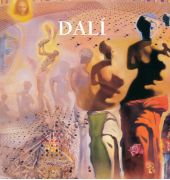 Dalí, Salvador (Figueras, 1904 – Torre-Galatea, 1989) Peintre, artiste, créateur d’objets, écrivain et cinéaste, il est connu du public comme un des représentants majeur du surréalisme. Buñuel, Lorca, Picasso, Breton… : ces rencontres constituent autant d’étapes dans la carrière de Dalí. Réalisé avec Buñuel, le film Un chien andalou marque son entrée officielle dans le groupe des surréalistes parisiens où il rencontre Gala, la femme d’Éluard, qui deviendra sa compagne et son inspiratrice. Entre cet artiste éclectique et provocateur et les surréalistes parisiens, les relations se tendront progressivement à partir de 1934 jusqu’à la rupture avec Breton, cinq ans plus tard. Pourtant, l’art de Dalí relève bien de l’esthétique surréaliste dont il a conservé le goût pour le dépaysement, l’humour et l’imagination. ... Далее
Dalí, Salvador (Figueras, 1904 – Torre-Galatea, 1989) Peintre, artiste, créateur d’objets, écrivain et cinéaste, il est connu du public comme un des représentants majeur du surréalisme. Buñuel, Lorca, Picasso, Breton… : ces rencontres constituent autant d’étapes dans la carrière de Dalí. Réalisé avec Buñuel, le film Un chien andalou marque son entrée officielle dans le groupe des surréalistes parisiens où il rencontre Gala, la femme d’Éluard, qui deviendra sa compagne et son inspiratrice. Entre cet artiste éclectique et provocateur et les surréalistes parisiens, les relations se tendront progressivement à partir de 1934 jusqu’à la rupture avec Breton, cinq ans plus tard. Pourtant, l’art de Dalí relève bien de l’esthétique surréaliste dont il a conservé le goût pour le dépaysement, l’humour et l’imagination. ... Далее -
4.
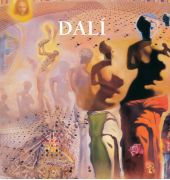 Dalí, Salvador (Figueras, 1904 – Torre-Galatea, 1989) Peintre, artiste, créateur d’objets, écrivain et cinéaste, il est connu du public comme un des représentants majeur du surréalisme. Buñuel, Lorca, Picasso, Breton… : ces rencontres constituent autant d’étapes dans la carrière de Dalí. Réalisé avec Buñuel, le film Un chien andalou marque son entrée officielle dans le groupe des surréalistes parisiens où il rencontre Gala, la femme d’Éluard, qui deviendra sa compagne et son inspiratrice. Entre cet artiste éclectique et provocateur et les surréalistes parisiens, les relations se tendront progressivement à partir de 1934 jusqu’à la rupture avec Breton, cinq ans plus tard. Pourtant, l’art de Dalí relève bien de l’esthétique surréaliste dont il a conservé le goût pour le dépaysement, l’humour et l’imagination. ... Далее
Dalí, Salvador (Figueras, 1904 – Torre-Galatea, 1989) Peintre, artiste, créateur d’objets, écrivain et cinéaste, il est connu du public comme un des représentants majeur du surréalisme. Buñuel, Lorca, Picasso, Breton… : ces rencontres constituent autant d’étapes dans la carrière de Dalí. Réalisé avec Buñuel, le film Un chien andalou marque son entrée officielle dans le groupe des surréalistes parisiens où il rencontre Gala, la femme d’Éluard, qui deviendra sa compagne et son inspiratrice. Entre cet artiste éclectique et provocateur et les surréalistes parisiens, les relations se tendront progressivement à partir de 1934 jusqu’à la rupture avec Breton, cinq ans plus tard. Pourtant, l’art de Dalí relève bien de l’esthétique surréaliste dont il a conservé le goût pour le dépaysement, l’humour et l’imagination. ... Далее -
5.
 Dalí, Salvador (Figueras, 1904 – Torre-Galatea, 1989) Peintre, artiste, créateur d’objets, écrivain et cinéaste, il est connu du public comme un des représentants majeur du surréalisme. Buñuel, Lorca, Picasso, Breton… : ces rencontres constituent autant d’étapes dans la carrière de Dalí. Réalisé avec Buñuel, le film Un chien andalou marque son entrée officielle dans le groupe des surréalistes parisiens où il rencontre Gala, la femme d’Éluard, qui deviendra sa compagne et son inspiratrice. Entre cet artiste éclectique et provocateur et les surréalistes parisiens, les relations se tendront progressivement à partir de 1934 jusqu’à la rupture avec Breton, cinq ans plus tard. Pourtant, l’art de Dalí relève bien de l’esthétique surréaliste dont il a conservé le goût pour le dépaysement, l’humour et l’imagination. ... Далее
Dalí, Salvador (Figueras, 1904 – Torre-Galatea, 1989) Peintre, artiste, créateur d’objets, écrivain et cinéaste, il est connu du public comme un des représentants majeur du surréalisme. Buñuel, Lorca, Picasso, Breton… : ces rencontres constituent autant d’étapes dans la carrière de Dalí. Réalisé avec Buñuel, le film Un chien andalou marque son entrée officielle dans le groupe des surréalistes parisiens où il rencontre Gala, la femme d’Éluard, qui deviendra sa compagne et son inspiratrice. Entre cet artiste éclectique et provocateur et les surréalistes parisiens, les relations se tendront progressivement à partir de 1934 jusqu’à la rupture avec Breton, cinq ans plus tard. Pourtant, l’art de Dalí relève bien de l’esthétique surréaliste dont il a conservé le goût pour le dépaysement, l’humour et l’imagination. ... Далее -
6.
 J.M.W. Turner wurde 1775 in Covent Garden als Sohn eines Barbiers geboren und starb 1851 in Chelsea. Es bedarf der Erfahrung eines Spezialisten, Gemälde auszusuchen,um ein Werk über diesen Maler zu verfassen, denn mit einem Gesamtwerk von über 19000 Gemälden und Zeichnungen kann Turner als ein äußerst produktiver Maler bezeichnet werden. Sein Name wird einerseits mit einer gewissen Vorstellung der Romantik in den Landschaften und einer bewundernswerten Gewandtheit in der Ausführung seiner Seegemälde verbunden. Andererseits erinnert er aber auch an einen Vorreiter im Umgang mit Farben: an Goethes Theorie der Farben. Man braucht das Talent des großen englischen Kritikers John Ruskin, um Turners Malerei zu interpretieren. Mit Gemälden wie dem Brand des Ober– und Unterhauses, seiner ergreifenden Sicht des Schlachtfeldes von Waterloo und vielen anderen gibt Turner aber auch einen Zeitzeugenbericht ab. Seine Werke werden in zahlreichen Museen ausgestellt, z.B. im British Museum in London sowie in New York, Washington und Los Angeles. ... Далее
J.M.W. Turner wurde 1775 in Covent Garden als Sohn eines Barbiers geboren und starb 1851 in Chelsea. Es bedarf der Erfahrung eines Spezialisten, Gemälde auszusuchen,um ein Werk über diesen Maler zu verfassen, denn mit einem Gesamtwerk von über 19000 Gemälden und Zeichnungen kann Turner als ein äußerst produktiver Maler bezeichnet werden. Sein Name wird einerseits mit einer gewissen Vorstellung der Romantik in den Landschaften und einer bewundernswerten Gewandtheit in der Ausführung seiner Seegemälde verbunden. Andererseits erinnert er aber auch an einen Vorreiter im Umgang mit Farben: an Goethes Theorie der Farben. Man braucht das Talent des großen englischen Kritikers John Ruskin, um Turners Malerei zu interpretieren. Mit Gemälden wie dem Brand des Ober– und Unterhauses, seiner ergreifenden Sicht des Schlachtfeldes von Waterloo und vielen anderen gibt Turner aber auch einen Zeitzeugenbericht ab. Seine Werke werden in zahlreichen Museen ausgestellt, z.B. im British Museum in London sowie in New York, Washington und Los Angeles. ... Далее -
7.
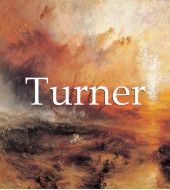 J.M.W. Turner wurde 1775 in Covent Garden als Sohn eines Barbiers geboren und starb 1851 in Chelsea. Es bedarf der Erfahrung eines Spezialisten, Gemälde auszusuchen,um ein Werk über diesen Maler zu verfassen, denn mit einem Gesamtwerk von über 19000 Gemälden und Zeichnungen kann Turner als ein äußerst produktiver Maler bezeichnet werden. Sein Name wird einerseits mit einer gewissen Vorstellung der Romantik in den Landschaften und einer bewundernswerten Gewandtheit in der Ausführung seiner Seegemälde verbunden. Andererseits erinnert er aber auch an einen Vorreiter im Umgang mit Farben: an Goethes Theorie der Farben. Man braucht das Talent des großen englischen Kritikers John Ruskin, um Turners Malerei zu interpretieren. Mit Gemälden wie dem Brand des Ober– und Unterhauses, seiner ergreifenden Sicht des Schlachtfeldes von Waterloo und vielen anderen gibt Turner aber auch einen Zeitzeugenbericht ab. Seine Werke werden in zahlreichen Museen ausgestellt, z.B. im British Museum in London sowie in New York, Washington und Los Angeles. ... Далее
J.M.W. Turner wurde 1775 in Covent Garden als Sohn eines Barbiers geboren und starb 1851 in Chelsea. Es bedarf der Erfahrung eines Spezialisten, Gemälde auszusuchen,um ein Werk über diesen Maler zu verfassen, denn mit einem Gesamtwerk von über 19000 Gemälden und Zeichnungen kann Turner als ein äußerst produktiver Maler bezeichnet werden. Sein Name wird einerseits mit einer gewissen Vorstellung der Romantik in den Landschaften und einer bewundernswerten Gewandtheit in der Ausführung seiner Seegemälde verbunden. Andererseits erinnert er aber auch an einen Vorreiter im Umgang mit Farben: an Goethes Theorie der Farben. Man braucht das Talent des großen englischen Kritikers John Ruskin, um Turners Malerei zu interpretieren. Mit Gemälden wie dem Brand des Ober– und Unterhauses, seiner ergreifenden Sicht des Schlachtfeldes von Waterloo und vielen anderen gibt Turner aber auch einen Zeitzeugenbericht ab. Seine Werke werden in zahlreichen Museen ausgestellt, z.B. im British Museum in London sowie in New York, Washington und Los Angeles. ... Далее -
8.
 J.M.W. Turner wurde 1775 in Covent Garden als Sohn eines Barbiers geboren und starb 1851 in Chelsea. Es bedarf der Erfahrung eines Spezialisten, Gemälde auszusuchen,um ein Werk über diesen Maler zu verfassen, denn mit einem Gesamtwerk von über 19000 Gemälden und Zeichnungen kann Turner als ein äußerst produktiver Maler bezeichnet werden. Sein Name wird einerseits mit einer gewissen Vorstellung der Romantik in den Landschaften und einer bewundernswerten Gewandtheit in der Ausführung seiner Seegemälde verbunden. Andererseits erinnert er aber auch an einen Vorreiter im Umgang mit Farben: an Goethes Theorie der Farben. Man braucht das Talent des großen englischen Kritikers John Ruskin, um Turners Malerei zu interpretieren. Mit Gemälden wie dem Brand des Ober– und Unterhauses, seiner ergreifenden Sicht des Schlachtfeldes von Waterloo und vielen anderen gibt Turner aber auch einen Zeitzeugenbericht ab. Seine Werke werden in zahlreichen Museen ausgestellt, z.B. im British Museum in London sowie in New York, Washington und Los Angeles. ... Далее
J.M.W. Turner wurde 1775 in Covent Garden als Sohn eines Barbiers geboren und starb 1851 in Chelsea. Es bedarf der Erfahrung eines Spezialisten, Gemälde auszusuchen,um ein Werk über diesen Maler zu verfassen, denn mit einem Gesamtwerk von über 19000 Gemälden und Zeichnungen kann Turner als ein äußerst produktiver Maler bezeichnet werden. Sein Name wird einerseits mit einer gewissen Vorstellung der Romantik in den Landschaften und einer bewundernswerten Gewandtheit in der Ausführung seiner Seegemälde verbunden. Andererseits erinnert er aber auch an einen Vorreiter im Umgang mit Farben: an Goethes Theorie der Farben. Man braucht das Talent des großen englischen Kritikers John Ruskin, um Turners Malerei zu interpretieren. Mit Gemälden wie dem Brand des Ober– und Unterhauses, seiner ergreifenden Sicht des Schlachtfeldes von Waterloo und vielen anderen gibt Turner aber auch einen Zeitzeugenbericht ab. Seine Werke werden in zahlreichen Museen ausgestellt, z.B. im British Museum in London sowie in New York, Washington und Los Angeles. ... Далее -
9.
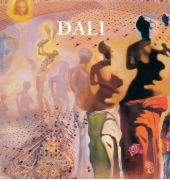 Maler, Designer, Hersteller von seltsamen Gegenständen, Autor und Filmemacher: Dali wurde der Berühmteste der Surrealisten. Bunuel, Lorca, Picasso und Breton hatten einen großen Einfluss auf seine Karriere. Dalis und Bunuels Film "Ein andalusischer Hund" markierte seinen offiziellen Einstieg in die festgefügte Gruppe der Pariser Surrealisten, wo er Gala kennen lernte, seine lebenslange Gefährtin und die Quelle seiner Inspiration. Aber seine Beziehung verfiel bald bis zu ihrem endgültigen Ende mit André Breton im Jahr 1939. Trotz allem blieb Dalis Kunst in ihrer Philosophie und Ausdrucksweise surrealistisch, und ein Schulbeispiel für Humor, Reinheit und Erforschung des Unbewussten. Während seines ganzen Lebens war Dali ein Genie der Selbstvermarktung, indem er seinem Ruf eine mystische Note zufügte und immer beibehielt. ... Далее
Maler, Designer, Hersteller von seltsamen Gegenständen, Autor und Filmemacher: Dali wurde der Berühmteste der Surrealisten. Bunuel, Lorca, Picasso und Breton hatten einen großen Einfluss auf seine Karriere. Dalis und Bunuels Film "Ein andalusischer Hund" markierte seinen offiziellen Einstieg in die festgefügte Gruppe der Pariser Surrealisten, wo er Gala kennen lernte, seine lebenslange Gefährtin und die Quelle seiner Inspiration. Aber seine Beziehung verfiel bald bis zu ihrem endgültigen Ende mit André Breton im Jahr 1939. Trotz allem blieb Dalis Kunst in ihrer Philosophie und Ausdrucksweise surrealistisch, und ein Schulbeispiel für Humor, Reinheit und Erforschung des Unbewussten. Während seines ganzen Lebens war Dali ein Genie der Selbstvermarktung, indem er seinem Ruf eine mystische Note zufügte und immer beibehielt. ... Далее -
10.
 J.M.W. Turner wurde 1775 in Covent Garden als Sohn eines Barbiers geboren und starb 1851 in Chelsea. Es bedarf der Erfahrung eines Spezialisten, Gemälde auszusuchen,um ein Werk über diesen Maler zu verfassen, denn mit einem Gesamtwerk von über 19000 Gemälden und Zeichnungen kann Turner als ein äußerst produktiver Maler bezeichnet werden. Sein Name wird einerseits mit einer gewissen Vorstellung der Romantik in den Landschaften und einer bewundernswerten Gewandtheit in der Ausführung seiner Seegemälde verbunden. Andererseits erinnert er aber auch an einen Vorreiter im Umgang mit Farben: an Goethes Theorie der Farben. Man braucht das Talent des großen englischen Kritikers John Ruskin, um Turners Malerei zu interpretieren. Mit Gemälden wie dem Brand des Ober– und Unterhauses, seiner ergreifenden Sicht des Schlachtfeldes von Waterloo und vielen anderen gibt Turner aber auch einen Zeitzeugenbericht ab. Seine Werke werden in zahlreichen Museen ausgestellt, z.B. im British Museum in London sowie in New York, Washington und Los Angeles. ... Далее
J.M.W. Turner wurde 1775 in Covent Garden als Sohn eines Barbiers geboren und starb 1851 in Chelsea. Es bedarf der Erfahrung eines Spezialisten, Gemälde auszusuchen,um ein Werk über diesen Maler zu verfassen, denn mit einem Gesamtwerk von über 19000 Gemälden und Zeichnungen kann Turner als ein äußerst produktiver Maler bezeichnet werden. Sein Name wird einerseits mit einer gewissen Vorstellung der Romantik in den Landschaften und einer bewundernswerten Gewandtheit in der Ausführung seiner Seegemälde verbunden. Andererseits erinnert er aber auch an einen Vorreiter im Umgang mit Farben: an Goethes Theorie der Farben. Man braucht das Talent des großen englischen Kritikers John Ruskin, um Turners Malerei zu interpretieren. Mit Gemälden wie dem Brand des Ober– und Unterhauses, seiner ergreifenden Sicht des Schlachtfeldes von Waterloo und vielen anderen gibt Turner aber auch einen Zeitzeugenbericht ab. Seine Werke werden in zahlreichen Museen ausgestellt, z.B. im British Museum in London sowie in New York, Washington und Los Angeles. ... Далее -
11.
 Maler, Designer, Hersteller von seltsamen Gegenständen, Autor und Filmemacher: Dali wurde der Berühmteste der Surrealisten. Bunuel, Lorca, Picasso und Breton hatten einen großen Einfluss auf seine Karriere. Dalis und Bunuels Film «Ein andalusischer Hund» markierte seinen offiziellen Einstieg in die festgefügte Gruppe der Pariser Surrealisten, wo er Gala kennen lernte, seine lebenslange Gefährtin und die Quelle seiner Inspiration. Aber seine Beziehung verfiel bald bis zu ihrem endgültigen Ende mit André Breton im Jahr 1939. Trotz allem blieb Dalis Kunst in ihrer Philosophie und Ausdrucksweise surrealistisch, und ein Schulbeispiel für Humor, Reinheit und Erforschung des Unbewussten. Während seines ganzen Lebens war Dali ein Genie der Selbstvermarktung, indem er seinem Ruf eine mystische Note zufügte und immer beibehielt. ... Далее
Maler, Designer, Hersteller von seltsamen Gegenständen, Autor und Filmemacher: Dali wurde der Berühmteste der Surrealisten. Bunuel, Lorca, Picasso und Breton hatten einen großen Einfluss auf seine Karriere. Dalis und Bunuels Film «Ein andalusischer Hund» markierte seinen offiziellen Einstieg in die festgefügte Gruppe der Pariser Surrealisten, wo er Gala kennen lernte, seine lebenslange Gefährtin und die Quelle seiner Inspiration. Aber seine Beziehung verfiel bald bis zu ihrem endgültigen Ende mit André Breton im Jahr 1939. Trotz allem blieb Dalis Kunst in ihrer Philosophie und Ausdrucksweise surrealistisch, und ein Schulbeispiel für Humor, Reinheit und Erforschung des Unbewussten. Während seines ganzen Lebens war Dali ein Genie der Selbstvermarktung, indem er seinem Ruf eine mystische Note zufügte und immer beibehielt. ... Далее -
12.
 J.M.W. Turner wurde 1775 in Covent Garden als Sohn eines Barbiers geboren und starb 1851 in Chelsea. Es bedarf der Erfahrung eines Spezialisten, Gemälde auszusuchen,um ein Werk über diesen Maler zu verfassen, denn mit einem Gesamtwerk von über 19000 Gemälden und Zeichnungen kann Turner als ein äußerst produktiver Maler bezeichnet werden. Sein Name wird einerseits mit einer gewissen Vorstellung der Romantik in den Landschaften und einer bewundernswerten Gewandtheit in der Ausführung seiner Seegemälde verbunden. Andererseits erinnert er aber auch an einen Vorreiter im Umgang mit Farben: an Goethes Theorie der Farben. Man braucht das Talent des großen englischen Kritikers John Ruskin, um Turners Malerei zu interpretieren. Mit Gemälden wie dem Brand des Ober– und Unterhauses, seiner ergreifenden Sicht des Schlachtfeldes von Waterloo und vielen anderen gibt Turner aber auch einen Zeitzeugenbericht ab. Seine Werke werden in zahlreichen Museen ausgestellt, z.B. im British Museum in London sowie in New York, Washington und Los Angeles. ... Далее
J.M.W. Turner wurde 1775 in Covent Garden als Sohn eines Barbiers geboren und starb 1851 in Chelsea. Es bedarf der Erfahrung eines Spezialisten, Gemälde auszusuchen,um ein Werk über diesen Maler zu verfassen, denn mit einem Gesamtwerk von über 19000 Gemälden und Zeichnungen kann Turner als ein äußerst produktiver Maler bezeichnet werden. Sein Name wird einerseits mit einer gewissen Vorstellung der Romantik in den Landschaften und einer bewundernswerten Gewandtheit in der Ausführung seiner Seegemälde verbunden. Andererseits erinnert er aber auch an einen Vorreiter im Umgang mit Farben: an Goethes Theorie der Farben. Man braucht das Talent des großen englischen Kritikers John Ruskin, um Turners Malerei zu interpretieren. Mit Gemälden wie dem Brand des Ober– und Unterhauses, seiner ergreifenden Sicht des Schlachtfeldes von Waterloo und vielen anderen gibt Turner aber auch einen Zeitzeugenbericht ab. Seine Werke werden in zahlreichen Museen ausgestellt, z.B. im British Museum in London sowie in New York, Washington und Los Angeles. ... Далее -
13.
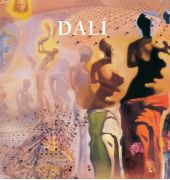 Pintor, diseñador, creador de objetos extraños, autor y cineasta, Dalí se convirtió en el más famoso de los surrealistas. Buñuel, Lorca, Picasso y Breton tuvieron una gran influencia en su vida artística. La película de Dalí, Un perro andaluz, que produjo Buñuel, marcó su entrada oficial en el cerrado grupo de los surrealistas parisinos, donde conoció a Gala, la mujer que se convertiría en su compañera de toda la vida y en su fuente de inspiración. Sin embargo, su relación con el grupo pronto se deterioró, hasta su ruptura final con André Breton en 1939. El arte de Dalí, empero, siguió siendo surrealista en su filosofía y expresión, así como el principal ejemplo de su frescura, humor y exploración de la mente subconsciente. A través de su vida, Dalí fue un genio de la promoción de sí mismo: creó y mantuvo una reputación como una figura casi mítica. ... Далее
Pintor, diseñador, creador de objetos extraños, autor y cineasta, Dalí se convirtió en el más famoso de los surrealistas. Buñuel, Lorca, Picasso y Breton tuvieron una gran influencia en su vida artística. La película de Dalí, Un perro andaluz, que produjo Buñuel, marcó su entrada oficial en el cerrado grupo de los surrealistas parisinos, donde conoció a Gala, la mujer que se convertiría en su compañera de toda la vida y en su fuente de inspiración. Sin embargo, su relación con el grupo pronto se deterioró, hasta su ruptura final con André Breton en 1939. El arte de Dalí, empero, siguió siendo surrealista en su filosofía y expresión, así como el principal ejemplo de su frescura, humor y exploración de la mente subconsciente. A través de su vida, Dalí fue un genio de la promoción de sí mismo: creó y mantuvo una reputación como una figura casi mítica. ... Далее -
14.
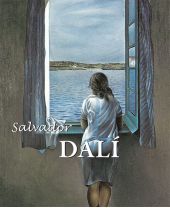 Salvador Dalí (1904-1989) is best known for his unique and striking style with an extraordinary repertoire reaching out across film, painting, photography, and sculpture. Whilst his name may be most commonly associated with Surrealism, Dalí consummately displayed mastery over such broad genres as classical, modernist, and Cubist styles. A crucial figure in art history, Dalí has inspired countless literary works and this edifying Best Of volume gives readers a fascinating insight into the life and career highlights of one of art’s most controversial and exciting pioneers. ... Далее
Salvador Dalí (1904-1989) is best known for his unique and striking style with an extraordinary repertoire reaching out across film, painting, photography, and sculpture. Whilst his name may be most commonly associated with Surrealism, Dalí consummately displayed mastery over such broad genres as classical, modernist, and Cubist styles. A crucial figure in art history, Dalí has inspired countless literary works and this edifying Best Of volume gives readers a fascinating insight into the life and career highlights of one of art’s most controversial and exciting pioneers. ... Далее -
15.
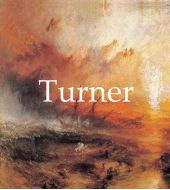 At fifteen, Turner was already exhibiting View of Lambeth. He soon acquired the reputation of an immensely clever watercolourist. A disciple of Girtin and Cozens, he showed in his choice and presentation of theme a picturesque imagination which seemed to mark him out for a brilliant career as an illustrator. He travelled, first in his native land and then on several occasions in France, the Rhine Valley, Switzerland and Italy. He soon began to look beyond illustration. However, even in works in which we are tempted to see only picturesque imagination, there appears his dominant and guiding ideal of lyric landscape. His choice of a single master from the past is an eloquent witness for he studied profoundly such canvases of Claude as he could find in England, copying and imitating them with a marvellous degree of perfection. His cult for the great painter never failed. He desired his Sun Rising through Vapour and Dido Building Carthage to be placed in the National Gallery side by side with two of Claude’s masterpieces. And, there, we may still see them and judge how legitimate was this proud and splendid homage. It was only in 1819 that Turner went to Italy, to go again in 1829 and 1840. Certainly Turner experienced emotions and found subjects for reverie which he later translated in terms of his own genius into symphonies of light and colour. Ardour is tempered with melancholy, as shadow strives with light. Melancholy, even as it appears in the enigmatic and profound creation of Albrecht Dürer, finds no home in Turner’s protean fairyland – what place could it have in a cosmic dream? Humanity does not appear there, except perhaps as stage characters at whom we hardly glance. Turner’s pictures fascinate us and yet we think of nothing precise, nothing human, only unforgettable colours and phantoms that lay hold on our imaginations. Humanity really only inspires him when linked with the idea of death – a strange death, more a lyrical dissolution – like the finale of an opera. ... Далее
At fifteen, Turner was already exhibiting View of Lambeth. He soon acquired the reputation of an immensely clever watercolourist. A disciple of Girtin and Cozens, he showed in his choice and presentation of theme a picturesque imagination which seemed to mark him out for a brilliant career as an illustrator. He travelled, first in his native land and then on several occasions in France, the Rhine Valley, Switzerland and Italy. He soon began to look beyond illustration. However, even in works in which we are tempted to see only picturesque imagination, there appears his dominant and guiding ideal of lyric landscape. His choice of a single master from the past is an eloquent witness for he studied profoundly such canvases of Claude as he could find in England, copying and imitating them with a marvellous degree of perfection. His cult for the great painter never failed. He desired his Sun Rising through Vapour and Dido Building Carthage to be placed in the National Gallery side by side with two of Claude’s masterpieces. And, there, we may still see them and judge how legitimate was this proud and splendid homage. It was only in 1819 that Turner went to Italy, to go again in 1829 and 1840. Certainly Turner experienced emotions and found subjects for reverie which he later translated in terms of his own genius into symphonies of light and colour. Ardour is tempered with melancholy, as shadow strives with light. Melancholy, even as it appears in the enigmatic and profound creation of Albrecht Dürer, finds no home in Turner’s protean fairyland – what place could it have in a cosmic dream? Humanity does not appear there, except perhaps as stage characters at whom we hardly glance. Turner’s pictures fascinate us and yet we think of nothing precise, nothing human, only unforgettable colours and phantoms that lay hold on our imaginations. Humanity really only inspires him when linked with the idea of death – a strange death, more a lyrical dissolution – like the finale of an opera. ... Далее -
16.
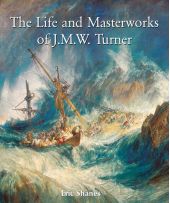 At fifteen, Turner was already exhibiting View of Lambeth. He soon acquired the reputation of an immensely clever watercolourist. A disciple of Girtin and Cozens, he showed in his choice and presentation of theme a picturesque imagination which seemed to mark him out for a brilliant career as an illustrator. He travelled, first in his native land and then on several occasions in France, the Rhine Valley, Switzerland and Italy. He soon began to look beyond illustration. However, even in works in which we are tempted to see only picturesque imagination, there appears his dominant and guiding ideal of lyric landscape. His choice of a single master from the past is an eloquent witness for he studied profoundly such canvases of Claude as he could find in England, copying and imitating them with a marvellous degree of perfection. His cult for the great painter never failed. He desired his Sun Rising through Vapour and Dido Building Carthage to be placed in the National Gallery side by side with two of Claude’s masterpieces. And, there, we may still see them and judge how legitimate was this proud and splendid homage. It was only in 1819 that Turner went to Italy, to go again in 1829 and 1840. Certainly Turner experienced emotions and found subjects for reverie which he later translated in terms of his own genius into symphonies of light and colour. Ardour is tempered with melancholy, as shadow strives with light. Melancholy, even as it appears in the enigmatic and profound creation of Albrecht Dürer, finds no home in Turner’s protean fairyland – what place could it have in a cosmic dream? Humanity does not appear there, except perhaps as stage characters at whom we hardly glance. Turner’s pictures fascinate us and yet we think of nothing precise, nothing human, only unforgettable colours and phantoms that lay hold on our imaginations. Humanity really only inspires him when linked with the idea of death – a strange death, more a lyrical dissolution – like the finale of an opera. ... Далее
At fifteen, Turner was already exhibiting View of Lambeth. He soon acquired the reputation of an immensely clever watercolourist. A disciple of Girtin and Cozens, he showed in his choice and presentation of theme a picturesque imagination which seemed to mark him out for a brilliant career as an illustrator. He travelled, first in his native land and then on several occasions in France, the Rhine Valley, Switzerland and Italy. He soon began to look beyond illustration. However, even in works in which we are tempted to see only picturesque imagination, there appears his dominant and guiding ideal of lyric landscape. His choice of a single master from the past is an eloquent witness for he studied profoundly such canvases of Claude as he could find in England, copying and imitating them with a marvellous degree of perfection. His cult for the great painter never failed. He desired his Sun Rising through Vapour and Dido Building Carthage to be placed in the National Gallery side by side with two of Claude’s masterpieces. And, there, we may still see them and judge how legitimate was this proud and splendid homage. It was only in 1819 that Turner went to Italy, to go again in 1829 and 1840. Certainly Turner experienced emotions and found subjects for reverie which he later translated in terms of his own genius into symphonies of light and colour. Ardour is tempered with melancholy, as shadow strives with light. Melancholy, even as it appears in the enigmatic and profound creation of Albrecht Dürer, finds no home in Turner’s protean fairyland – what place could it have in a cosmic dream? Humanity does not appear there, except perhaps as stage characters at whom we hardly glance. Turner’s pictures fascinate us and yet we think of nothing precise, nothing human, only unforgettable colours and phantoms that lay hold on our imaginations. Humanity really only inspires him when linked with the idea of death – a strange death, more a lyrical dissolution – like the finale of an opera. ... Далее
Комментарии:


